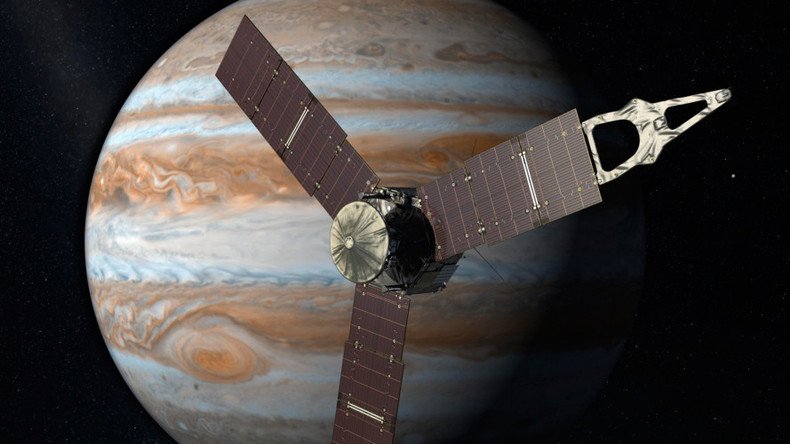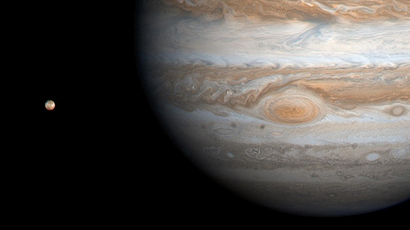NASA's Juno breaks distance-from-sun record for solar-powered spacecraft

Juno, NASA's probe of Jupiter, set a new standard for solar-powered spacecraft when it reached 493 million miles (793 million km) from the sun. Juno is expected to arrive at Jupiter on July 4, 2016.
The four-ton Juno broke the previous record set by the European Space Agency's Rosetta spacecraft in October 2012, when it peaked at 492 million miles (792 million km) amid its approach to the comet 67P/Churyumov-Gerasimenko, according to NASA.
493 million miles from the sun, @NASAJuno spacecraft is most distant solar-powered explorer: https://t.co/5zS7IYNQ5Fpic.twitter.com/R6mXVNx8PY
— NASA (@NASA) January 13, 2016With nearly 19,000 solar cells affixed to three 30-foot-long (9-meter) solar arrays, Juno was launched in 2011 as the first solar-powered spacecraft with potential to travel such distances from the sun. Juno's solar cells generate around 14 kilowatts of electricity. Previous space probes sent toward Jupiter were powered by nuclear sources of energy, the space agency said.
NASA and its partners in the Juno mission used the new record to highlight the spacecraft's purpose. Juno's mission involves peering beyond Jupiter's cloud cover to analyze the planet's aurorae in hopes of gathering more information about Jupiter's "origins, structure, atmosphere and magnetosphere," NASA said.
How NASA’s Juno mission to Jupiter became the most distant solar-powered explorer https://t.co/KPlHABVYgYpic.twitter.com/VHlambzchS
— Spacer (@spacer_im) January 14, 2016"We use every known technique to see through Jupiter's clouds and reveal the secrets Jupiter holds of our solar system's early history," said Scott Bolton, principal investigator of the Juno mission with the nonprofit research and development organization Southwest Research Institute. "It just seems right that the sun is helping us learn about the origin of Jupiter and the other planets that orbit it."
Given that Jupiter is five times farther away from the sun than Earth, sunlight at that distance "packs 25 times less punch," said Rick Nybakken, Juno's project manager at NASA's Jet Propulsion Laboratory. Once at Jupiter, Juno's solar arrays will generate around 500 watts, "more than enough to get the job done," he added.
Jupiter's ‘one-eyed giant Cyclops’ captured by Hubble http://t.co/HovguOv9eqpic.twitter.com/EtPoK7ZItT
— RT (@RT_com) October 30, 2014Juno will reach as far as 517 million miles (832 million km) from the sun during its 16-month mission, NASA said. It will orbit Jupiter 33 times in the next year, coming as close as 3,100 miles (5,000 km) from the zenith of Jupiter's clouds once every 14 days.
"It is cool we got the record and that our dedicated team of engineers and scientists can chalk up another first in space exploration," said Bolton. "But the best is yet to come. We are achieving these records and venturing so far out for a reason -- to better understand the biggest world in our solar system and thereby better understand where we came from."













